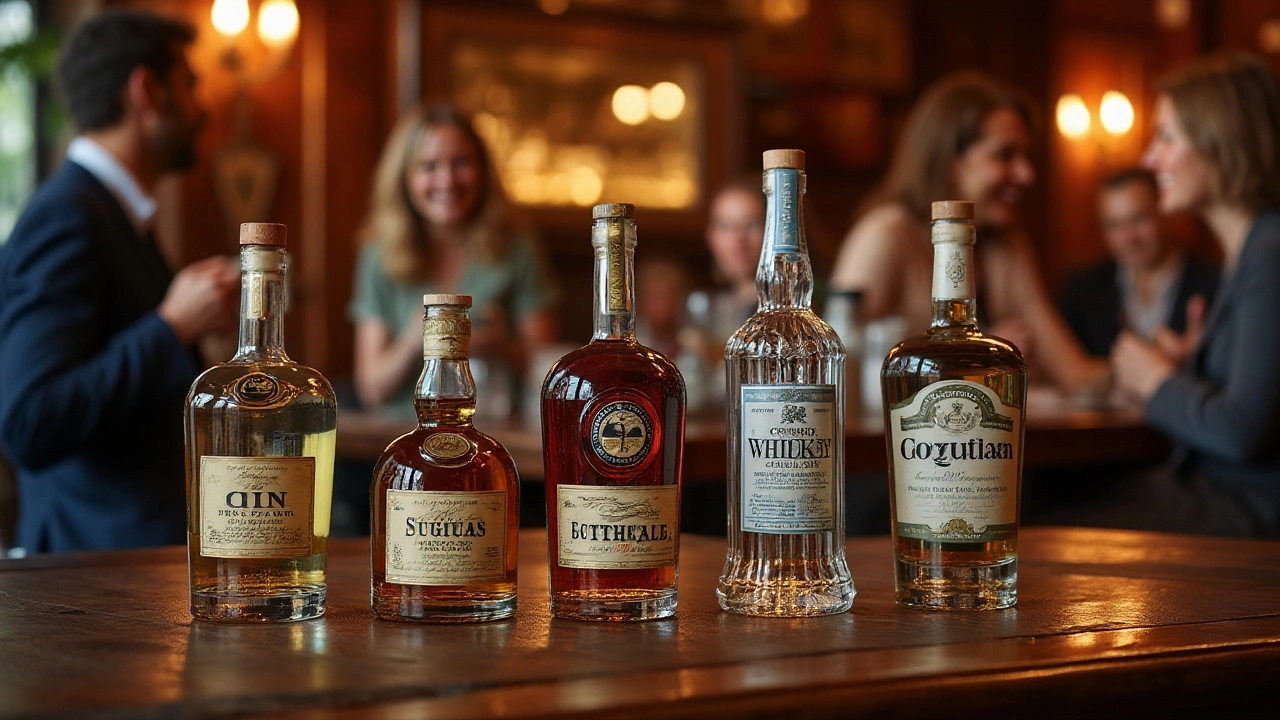Gin Lovers Unite: Tasting, Cocktails, and Top Showdowns
If you’ve ever wondered why gin keeps popping up on cocktail menus and Instagram feeds, you’re not alone. This botanical spirit mixes history, herbs, and a dash of mystery into every bottle. Below you’ll find practical advice on how to taste gin, pick the right bottle for your favorite drinks, and even a quick look at the Hendricks vs Bombay debate that’s been sparking conversations among enthusiasts.
What Makes Gin So Popular?
Gin’s rise isn’t just about its sharp, juniper‑forward flavor. It’s versatile enough to pair with citrus, spice, or even fruit, which means you can craft a cocktail for almost any mood. The base spirit is neutral, so the botanicals – think coriander, angelica, citrus peel – become the star. That flexibility is why bartenders love it and why home mixers keep reaching for a bottle.
Another reason? Gin’s story. From 17th‑century Dutch genever to the modern craft boom, each era added a new twist. Today’s small‑batch distilleries experiment with exotic botanicals, giving you dozens of flavor profiles to explore without leaving your kitchen.
How to Taste Gin Like a Pro
Start with a clean glass and a neutral palate – water or a plain cracker works. Swirl the gin gently, then bring the glass to your nose. You’ll likely catch juniper first, followed by citrus, spice, or floral notes. Take a small sip, let it coat your tongue, and note the balance between the base spirit and the botanicals.
Don’t rush. Let the flavor evolve; some gins reveal hints of pepper or even caramel after a few seconds. If you’re comparing bottles, use the same glass and temperature for each to keep the experience consistent.
And if you’re still unsure which gin fits your style, try the classic “gin tasting triangle”: a London dry (clean and crisp), a contemporary craft gin (bold botanicals), and a flavored gin (extra fruit or spice). This quick test shows you the range without overwhelming you.
Hendricks vs Bombay: The Showdown
Two names dominate the conversation: Hendrick’s and Bombay Sapphire. Hendrick’s stands out with cucumber and rose petals, giving it a fresh, almost garden‑like character. It’s great in a simple gin and tonic or a cucumber‑mint smash.
Bombay Sapphire, on the other hand, leans heavily on a blend of ten botanicals, including almond and licorice. Its profile is vibrant and aromatic, making it perfect for classic cocktails like a martini or a negroni with a twist.
Which one wins? It depends on your taste. If you prefer subtle, floral notes, Hendrick’s is your go‑to. If you like a lively, spice‑forward gin, reach for Bombay. Both are excellent choices for different drinks, so keep both on hand and let the cocktail decide.
Easy Gin Cocktails to Try Tonight
Ready to put your new knowledge to use? Here are three quick recipes:
- Classic Gin & Tonic: 2 oz gin, tonic water, lime wedge. Add a cucumber slice for Hendrick’s.
- Bee’s Knees: 2 oz gin, ¾ oz fresh lemon juice, ½ oz honey syrup. Shake and strain over ice.
- Gin Martini: 2 ½ oz gin, ½ oz dry vermouth, lemon twist. Stir, don’t shake, for a smooth finish.
Each recipe showcases different flavor angles, so you’ll see how the botanicals shine in various settings.
Whether you’re new to gin or a seasoned aficionado, this guide gives you the basics to taste, compare, and craft drinks with confidence. Grab a bottle, explore the aromas, and enjoy the endless cocktail possibilities that gin offers.
Wondering if gin or vodka is better for your stomach? This article breaks down how these two popular spirits affect digestion, gut comfort, and hangover potential. Get surprising facts about mixers, botanicals, and quality differences. Learn tips from distillery experts on making smarter drink choices for sensitive stomachs. Find out which spirit wins for a gentler night out.
View DetailsDive into the fascinating world of spirits as we explore the 7 essential spirit drinks that have captured the palates and imaginations of connoisseurs worldwide. From the complex depths of whiskey to the refreshing zest of gin, each drink tells its own unique story. Learn about their origins, unique traits, and tips on how to truly appreciate each one. Whether you're a seasoned taster or a newcomer, this exploration will enrich your understanding and enhance your tasting experience. Discover the rich tapestry of flavors and traditions that make each spirit special.
View Details


